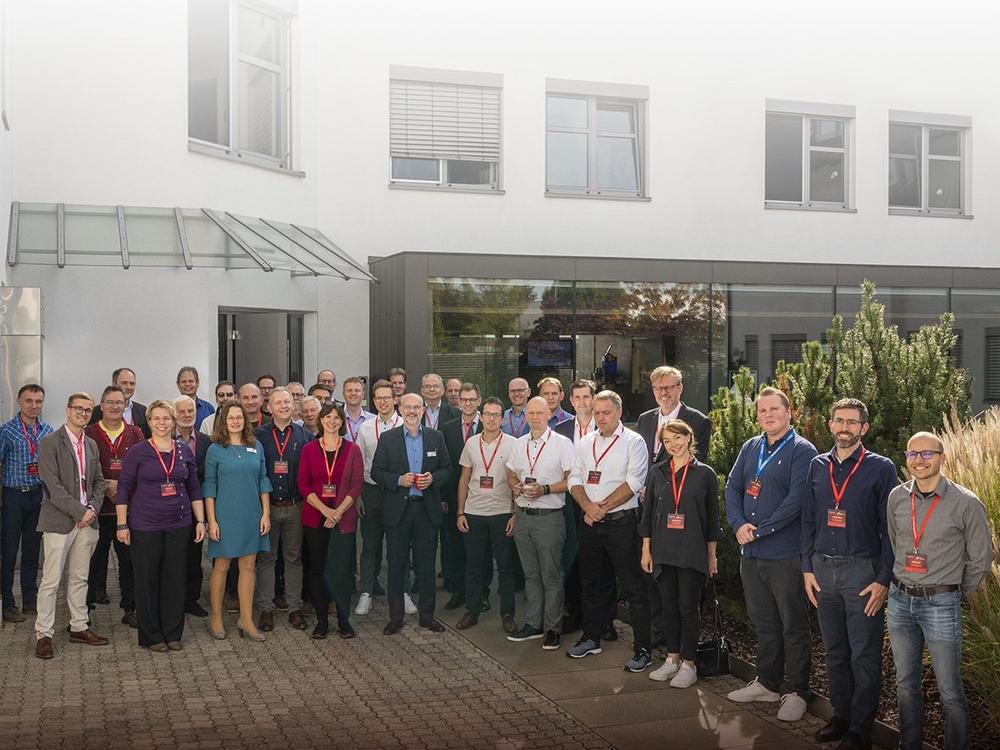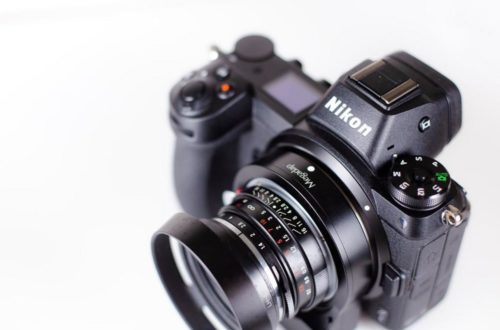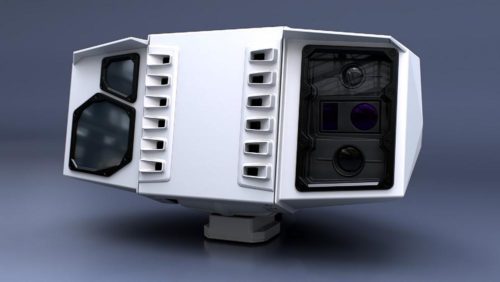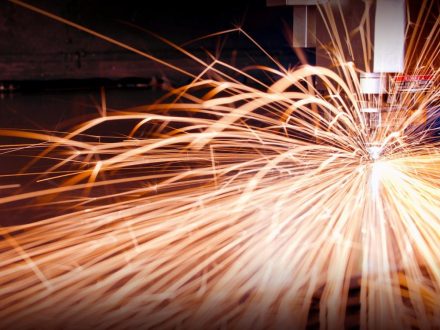
UV Experts from All over the World Exchanged Ideas and Experiences
The event kicked off with presentations on a variety of innovations. Phillip Jahn from Toptica Photonics AG, for example, presented their Deep UV high-power laser system. As part of a joint project, it is now used as a 229 nm laser source for UV Raman spectroscopy.
Leo Schowalter from Nagoya University and Marco Jupé from the Laserzentrum Hannover e.V. both presented the results of their current research. The UVC laser diodes developed in Japan use pseudomorphic AlGaN on single-crystal AlN substrates and are already employed in the industry – for example in UVC LED production. In Hannover, they focus on new coating concepts that incorporate so-called quantum laminates (QNLs) into the layer system. This allows for more precise adjustment of optical band edge and refractive index and increases the damage threshold resistance.
LED technologies, which were the main topic of the second day’s presentations, are currently the subject of intense discussion. UVC LEDs are considered to be the technology of the future when it comes to disinfection of water, air and surfaces. Jens Raß from the Ferdinand-Braun-Institute informed the participants about the current state of Far-UVC research. The day before, USHIO presented another technology and the related applications in this field with 222 nm excimer lamps.
U.S. manufacturer Bolb, Inc., who specializes in germicidal UVC LEDs, currently achieves the highest output from a single chip at 265 nm with over 100 mW. The joint DINoLED project is currently working on a DIN standard for the use of such LEDs in public drinking water treatment. The Korean company Photon Wave Co, Ltd., who already covers UVB and UVC wavelengths, announced at the WORKshop that it will soon expand its extensive product range to include 340 nm UVA LEDs.
»The UV industry is moving at a fast pace,« says Olga Stroh-Vasenev, who is in charge of this product area at LASER COMPONENTS. »There are no established standard solutions yet, especially in the short-wave UVB and UVC spectra. With our WORKshops, we offer scientists, engineers, and companies a platform to exchange knowledge and experience. The success of this series of events proves us right.«
»LASER COMPONENTS provided a perfect setting for the almost family-like exchange of experience, knowledge and ideas in a way that large conferences cannot offer," adds Klaus Jacobs of Advanced UV for Life e.V. »I would particularly like to highlight the contributions on the current field of Far UVC, which enables UV disinfection without doing any harm to the human skin or eyes. The WORKshop gave an overview of the latest status from an industrial point of view.«
LASER COMPONENTS was founded by Günther Paul as a sales company in 1982. Neither the EU nor the euro existed at that time. It was almost impossible for companies to import components from abroad; we became the reliable partner for imported components. Much has changed since then: The internet has made the world smaller, start-ups have become major players, and last but not least, we have also continued to develop.
However, we have always stayed true to our core business: the production and sale of optical and optoelectronic components.
LASER COMPONENTS has grown over the years. In 1986 the first production facility was opened in Germany; sales branches were founded in France, Great Britain, Sweden, and the U.S.A.; and production facilities were set up in Canada and the U.S.A.
The most important resource in our company’s history is our employees; many a 30-year employee anniversary has already been celebrated. Long-term employment relationships ensure our know-how, and we are convinced that we are on the right track with this tradition!
Laser Components Germany GmbH
Werner-von-Siemens-Str. 15
82140 Olching
Telefon: +49 (8142) 2864-0
Telefax: +49 (8142) 2864-11
http://www.lasercomponents.com/de/
Telefon: +49 (8142) 2864-85
Fax: +49 (8142) 2864-11
E-Mail: presse@lasercomponents.com
![]()





